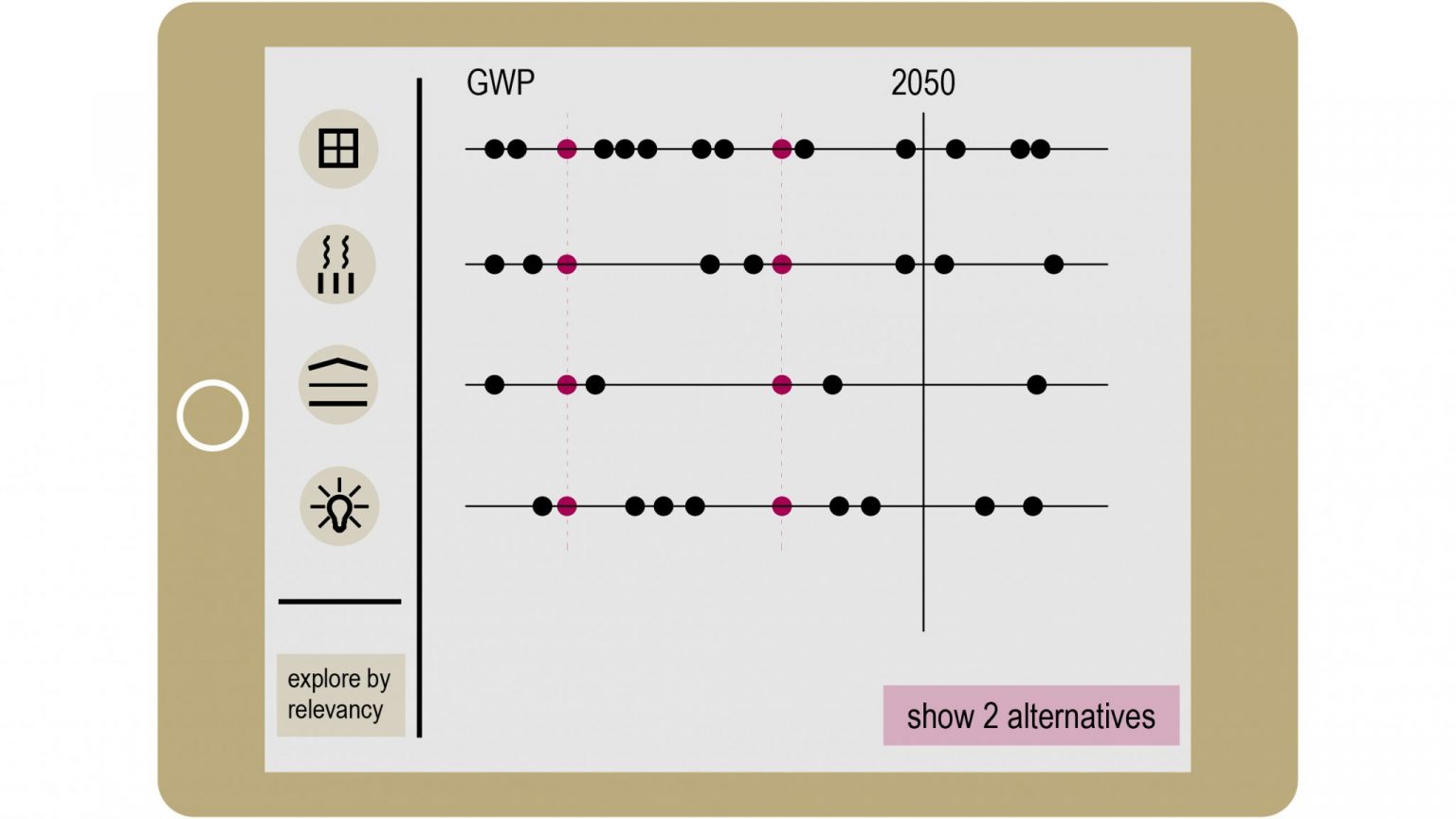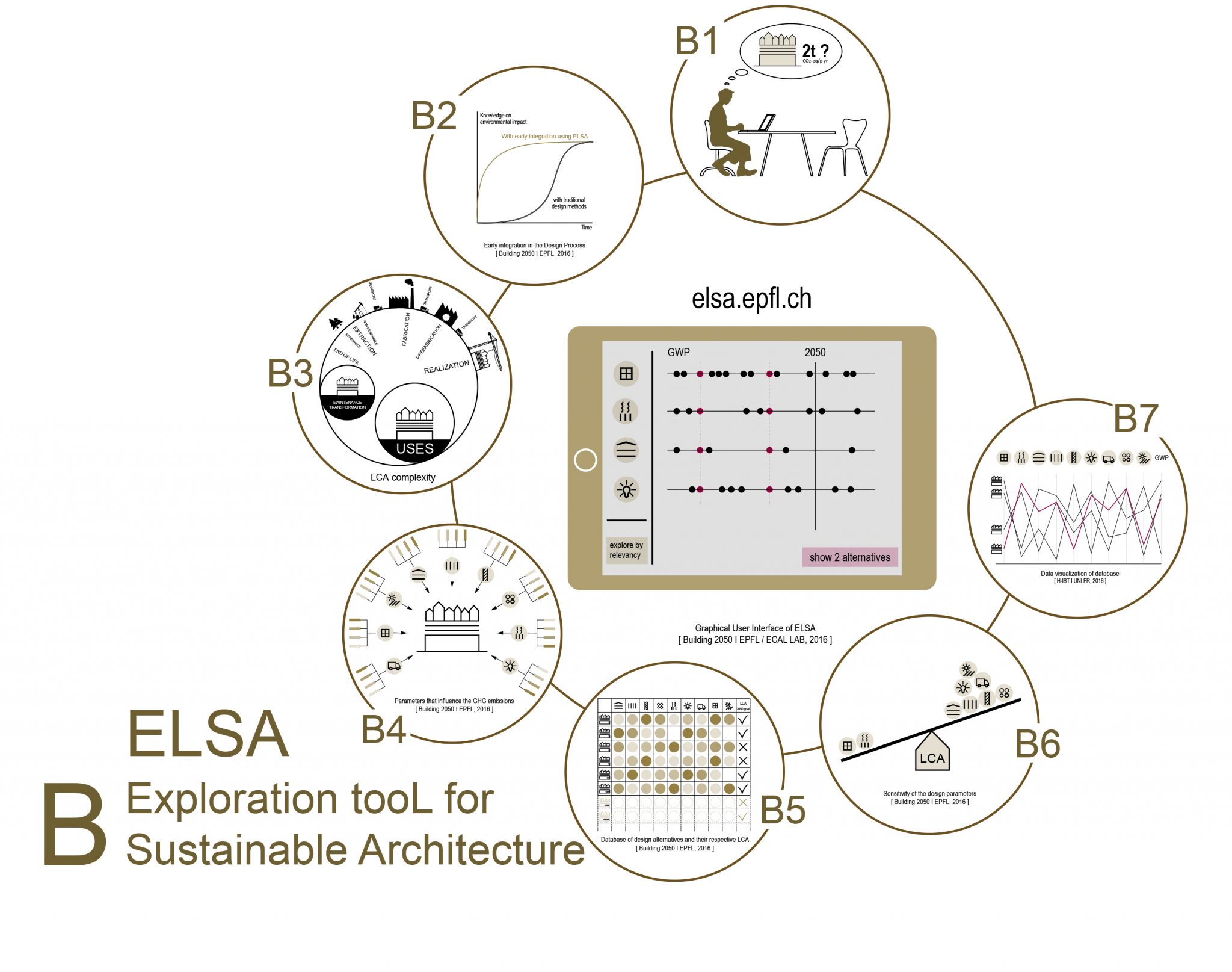Exploration tooL for Sustainable Architecture (ELSA)

On the basis of an architectural intention, it enables the designers to manage a limited “carbon and energy budget”, enforced for the building’s construction.
The tool uses a database of several thousands of conception alternatives, with their respective performances, allowing an early integration of environmental specifications in the design process.
Throughout the project’s materialization decisions, the incompatible options are eliminated, guiding the designer through his successive choices.
To face climate change, GHG emission targets will be set worldwide for the built environment, one of its major contributors. As a result, Life-Cycle Assessment (LCA) will become an important driver in the building design stakeholders’ decisions, for increasing the operating performance while minimizing embodied impacts. However, the integration of LCA to the design process adds a high degree of complexity (05-B3). In addition, it allows assessing the environmental
performance but does not help finding
design alternatives. New techniques such as design solutions exploration methods are promising tools to understand general performance trends, and to increase the usability of the results,but have not been applied to LCA so far. One of the challenges to face is that – due to the high number of parameters involved in GHG emission assessment in buildings – it is currently impossible to investigate all the design solutions in a reasonable computational time.
Adopted approach for the SLB research program on early stage LCA
A unique exploration method enabling to integrate lifecycle performance at early design stages has been developed through this research program and translated into an operating prototype named ELSA, which stands for Exploration tooL for Sustainable Architecture (elsa.epfl.ch).
This was made possible through an original combination of different techniques, developed towards this end: a variation of analytical target cascading methodology, which needed to be adapted to the building scale (01-D), parametric simulations (05-B4) and sensitivity analyses (05-B6). The proposed approach aims to appraise design alternatives instantaneously by highlighting the environmental consequences of architectural choices using specific data visualization techniques (05-B7).
For further details, see publications below
Partners
EPFL ECAL-Lab, EPFL
Human-IST, University of Fribourg
Funding
State of Fribourg – Switzerland
Please note that the publication lists from Infoscience integrated into the EPFL website, lab or people pages are frozen following the launch of the new version of platform. The owners of these pages are invited to recreate their publication list from Infoscience. For any assistance, please consult the Infoscience help or contact support.
